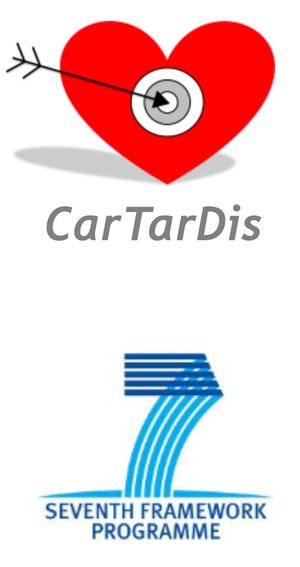MORPHISTO was and is a partner in various research projects with histological or immunohistochemical questions, funded by DFG, BMBF and EU as well as in other third-party funded projects.
Whenever histological and immunohistochemical development and contract work is required: MORPHISTO is an ideal partner. Our scientists have project experience and in-depth know-how in all areas of tissue-based research questions.
The aim of the IPN2 research project is to develop a network architecture which, by processing multimodal input data and quantifying the local immune profile of a tumor and its microenvironment, can predict the success of an individual patient's immunotherapy.
Despite current successes in the field of immunotherapy, further fundamental work is needed to identify patients who will benefit from immunotherapy. For example, it is currently not possible to make a reliable automated statement regarding the individual response rate of such a therapy for patients with bladder or prostate cancer. As has already been shown elsewhere, the quantitative assessment of the tumor microenvironment at the cellular level plays a decisive role in the prediction of immunotherapy. This quantification is based on the analysis of histopathological image data.
Therefore, the aim of this research project is to develop an analytical method that enables the tumor to be classified as "cold" or "warm" via its individual immune profile and its microenvironment. In contrast to a "cold tumour", a "warm tumour" is characterised by an active immune system. The result is used to predict the chances of success of the patient's immunotherapy. Algorithms from the field of artificial intelligence and especially the "deep neural networks" offer themselves as suitable tools. They have a decisive advantage over alternative methods such as randomised decision trees: they can automatically determine the features relevant for the prediction to describe the cellular microenvironment.
In addition to the histological images, clinical data are also used as input parameters for the neuronal networks for the project. Consequently, this means that a network architecture must be developed that is suitable for processing multimodal input data.

Cardiovascular disease (CVD) is the world's leading cause of death, causing more than 17 million deaths annually. In order to improve the life expectancy of CVD patients, a multi-partner consortium funded by the European Union has been established to challenge the development of drugs for the treatment of cardiovascular diseases.
CVD affects the heart as well as the surrounding blood vessels and can take many forms such as high blood pressure, coronary heart disease, heart disease and stroke. Progression is slow, with no clear symptoms warning of this life-threatening disease. Although the introduction of statins has reduced the morbidity and mortality of atherosclerosis by 30%, a large residual risk remains for the cardiovascular system, which requires the development of new drugs. The aim of the EU project CarTarDis (Cardiovascular Target Discovery) is to promote the development of CVD drugs through the discovery and validation of novel therapeutic targets.
As part of a BMBF-funded joint project, MORPHISTO is a partner for the establishment of automated, quantitative screening methods for histological and immunohistological samples using the TissueFAXS evaluation system from TissueGnostics.
The aim of MORPHISTO's work is to develop a standardized quantitative method for the automated investigation of receptor expressions in tissue samples, which will enable patient selection. For this purpose, microarrays, xenograft isolates and human tumor samples are analyzed for receptor expressions and for specific tumor and apoptosis markers.
The project aims to develop a targeted tumor therapy based on the highly potent, cytotoxic natural substance Disorazol-Z, which is coupled to GPCR-specific peptide hormones. At the same time, a diagnostic system is being set up to enable the conjugates to be used as part of a personalized therapeutic approach.
The principle of a targeted, personalized therapy with cytotoxic conjugates is the accumulation of the active substance at the site of action due to an (over-)expression of a specific receptor in the tumor tissue. This can lead to an increase in effectiveness while reducing possible side effects at the same time.
The project is carried out jointly with Aeterna Zentaris Inc., the Helmholtz Institute Saarbrücken, the working groups of Prof. Gründker (Göttingen) and PD Dr. Wischhusen (Würzburg) and PD Dr. Engel (Würzburg).
Our services:
Contact: